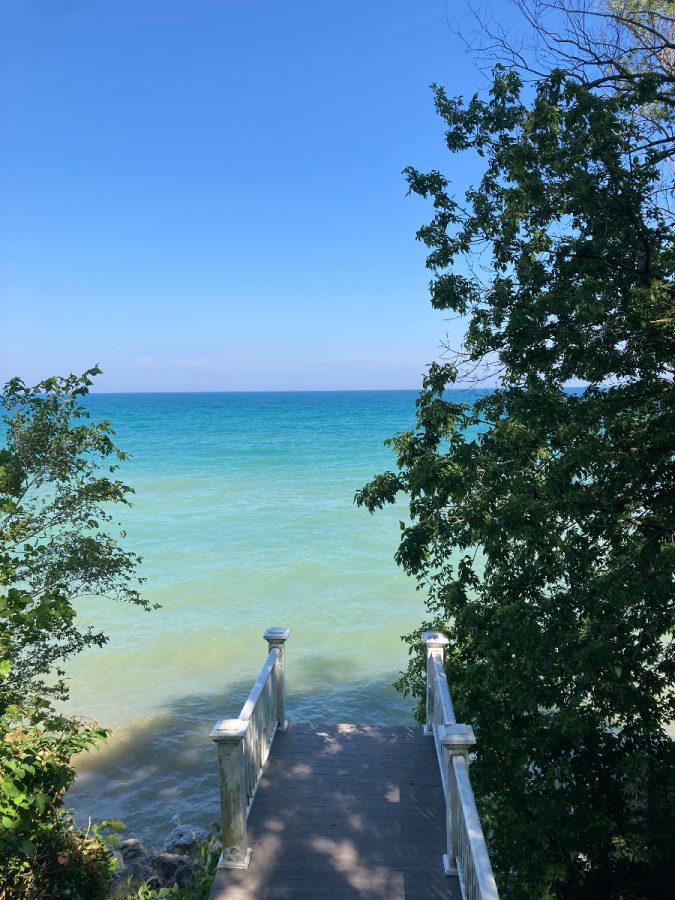Beach erosion has become a huge problem in coastal areas
These stairs on Lake Michigan once reached a sandy beach; now, they reach straight into the water
September 11, 2022
Along the sunny shoreline of Lake Michigan sits sandy beaches studded with a variety of rocks and pebbles. These beaches are a popular destination for families in the area as well as vacationers. But the beaches are starting to be swallowed up by the dark blue water.
Although erosion has taken place for a long time, it is starting to have a larger impact on the environment today, especially on beaches. Coastal erosion, or beach erosion, is also taking its toll on the way we live.
Erosion is the process of soil and sand being washed away by wind and water and has occurred for thousands of years. Beach erosion occurs when wind moves water toward the land on the beaches, forming waves. The windier it is, the higher and more aggressive the waves are. The rising and falling tides cause the shape of the beaches to change over time.
Although erosion occurs naturally, human impact makes it worse. Most land bordering beaches (whether that be on oceans or large lakes) is used for building housing developments. These homes are usually built right on the water, making the beaches smaller; they do not recede very far away from the water. When the shape of the beaches are constantly changing due to erosion, it ruins the base structure of houses. Many homes are starting to sink towards the water, devastating the people who live in them.
In Lake Michigan, coastal erosion has changed drastically over the past few years. The beaches used to fluctuate naturally up and down by a few feet every ten years or so. Now, depending on the area, the beaches can erode 10, 20 or even 30 feet per year.
In the community of Grand Beach, MI, there are only a few remaining access points to the beaches. The water has completely washed away the sand where other access points used to be. Now those stairs are just built straight into the waves, the water lapping at the steps. Some people may have had access to the beach right next to their house, but now they have to walk to an area farther away in order to find an accessible beach.
Climate change has also played a role in coastal erosion. As the planet is getting warmer, the glaciers in the poles are melting. This causes sea levels to rise, which means the tide on the beach is much higher up on the shore. Because of this, erosion happens at a much faster rate.
One way to slow down the process or put a stop to unnatural erosion is to restore the natural habitat of the area. This means not destroying the natural sand dunes and wetlands as well as planting vegetation near the water’s edge. Another way to prevent detrimental coastal erosion is to build structures such as seawalls. Although this will not last forever, it does provide a temporary solution. Finally, building homes away from the shoreline will help families to avoid the possibility of losing their homes to the water. Beach developments aren’t as popular anymore, and some places even restrict this kind of activity to protect the beaches. However, houses that are currently on the water are at huge risk, and it is recommended that homes not be built right on the shoreline anymore.
Even if we try to stop beaches from eroding, the process will still occur naturally. The goal should be to slow it down to the point where people are no longer losing their homes and minimize damage. You can find more information on coastal erosion here.










G-Mom • Sep 11, 2022 at 11:04 am
The stairs to nowhere is so sad – earth is not getting the respect from us that it deserves!